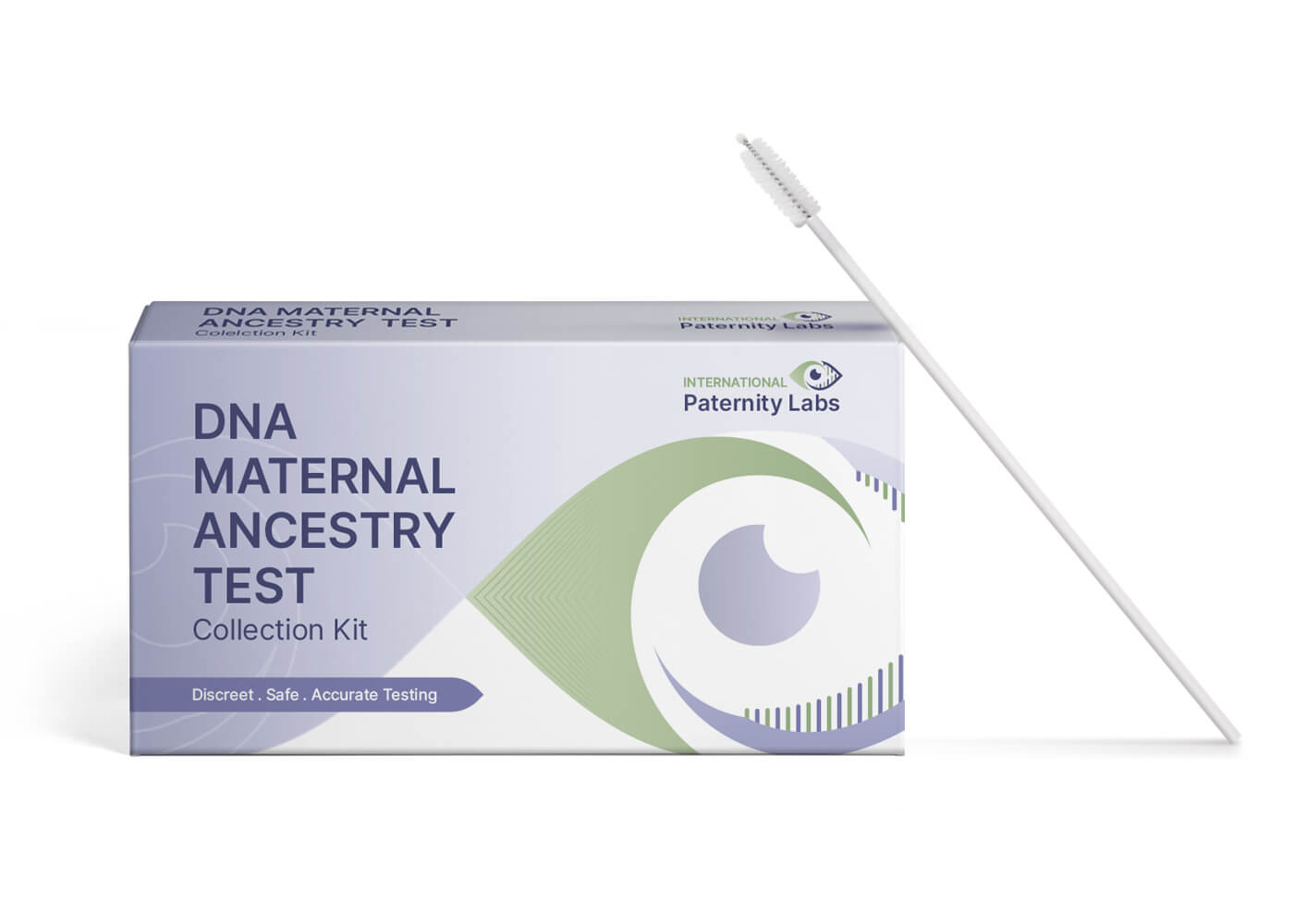DNA Tests

Order Your Confidential Home DNA Test Online!
- Test Description
Mitochondrial DNA (mtDNA) is DNA that is found in the mitochondria of cells. Both males and females have mtDNA so both males and females can take the mtDNA test. mtDNA is passed down strictly from mother to child along the direct maternal line. The matrilineal inheritance pattern of mtDNA means that all people who descended from the same matrilineal ancestral lineage will have exactly the same mtDNA profile.
mtDNA testing allows you to trace the ancestry of your direct maternal lineage (your mother’s, mother’s, mother’s… maternal lineage). Using your mtDNA results, you can find out whether you are linked to any other individual along your direct maternal line; you can search a global database to seek potential long lost maternal line relatives from around the world; and you can find out which ancient mtDNA Haplogroup you belong to.
- What is the significance of mtDNA HVR1, HVR2 and Coding Region sequences?
Mitochondrial DNA (mtDNA) is DNA that is found in the mitochondria of cells. Both males and females have mtDNA so both males and females can take the mtDNA test. mtDNA is passed down strictly from mother to child along the direct maternal line. The matrilineal inheritance pattern of mtDNA means that all people who descended from the same matrilineal ancestral lineage will have exactly the same mtDNA profile.
mtDNA testing allows you to trace the ancestry of your direct maternal lineage (your mother’s, mother’s, mother’s… maternal lineage). Using your mtDNA results, you can find out whether you are linked to any other individual along your direct maternal line; you can search a global database to seek potential long lost maternal line relatives from around the world; and you can find out which ancient mtDNA Haplogroup you belong to.
What is the significance of mtDNA HVR1, HVR2 and Coding Region sequences?
mtDNA is unique because it is passed down strictly along the direct maternal line (from mother to child). Only females can pass their mtDNA down to their children, so even though both males and females have mtDNA, only females can pass their mtDNA down to the next generation. The maternal line inheritance pattern of mtDNA means that your mtDNA is inherited directly from your matrilineal ancestors (mother’s, mother’s, mother’s…. maternal lineage). The matrilineal inheritance pattern of mtDNA means that all people who have descended from the same maternal lineage as you will have exactly the same mtDNA as you.
What can I do with my mtDNA Sequencing results?
Using your mtDNA sequencing results, any two individuals can compare their profiles to see whether they descended from the same maternal line. If the mtDNA test shows that two individuals have different mtDNA profiles, it would conclusively prove that they did not descend from the same maternal lineage. You can use your mtDNA profile to compare with other individuals in your tree to confirm a positive linkage, verify new linkages, or verify findings from your paper research. You can also use your mtDNA markers to search our global database to find potential matches from around the world. You can even choose to receive automatic notifications by email whenever a new match is found.
How many mtDNA regions should I test and what is the difference between testing only the HVR1 region versus testing both HVR1 and HVR2, versus testing the full mtDNA (HVR1, HVR2 and Coding Region)?
The mtDNA consists of 3 regions: HVR1, HVR2 and Coding Region. The more mtDNA regions you test, the more stringent your comparisons will be when matching against another individual. For example, a perfect match with another individual at all 3 regions will be a far stronger match than a match at only the HVR1 region. If you have a HVR1 match with another individual, comparing more regions will provide further clarification of the relevance of the match and will allow you to see if you continue to match when more regions are compared.
If I test only the HVR1 region, can I test more regions at a later date?
In total the mtDNA has 3 regions: HVR1, HVR2 and Coding Region. If you test only the HVR1 region, or only the HVR1 and HVR2 Regions, you can choose to test the remaining region(s) at a later date. However, you may be required to collect a new sample for the additional testing.
Highest Standards
- FAQs
What are mtDNA Haplogroups?
mtDNA Haplogroups are ancient matrilineal family groups which can be traced back to common origins in Africa over 100,000 years ago. DNA studies have shown that all humans living today can trace their maternal origins back to common matrilineal roots stemming in Africa over 150,000 years ago. Over a period of tens of thousands of years, our ancient ancestors eventually journeyed out of Africa in different groups of migrations and journeyed along different migration paths to eventually settle in their final ancient homeland, eventually populating the rest of the world. These ancient family groups are called “mtDNA haplogroups”. Each mtDNA haplogroup is associated with a specific ancestral migration journey which leads to a specific region of the world.
How is mtDNA used to discover mtDNA Haplogroups?
mtDNA contains genetic markers called “SNPs”. SNP are small mutations which occur naturally in the DNA at a rate of approximately one mutation every few thousand years. Once a SNP marker appears in a person’s mtDNA, it is passed down to all future descendents along the maternal line. Today, our own mtDNA has an accumulation of many SNP markers which were passed down to us from our ancient maternal ancestors over a period of tens of thousands of years. By studying the SNP markers found in the mtDNA of indigenous populations from around the world, scientists can determine approximately where and when each SNP marker first appeared. Analysing the mtDNA SNP markers found in indigenous populations allows scientists to generate a mtDNA phylogenetic tree. The main branches of the tree represent “mtDNA haplogroups” and the finer sub-branches of the tree are called “mtDNA Subclades”. Each mtDNA haplogroup represents an ancient family group which can be traced to a distinct ancient migration path out of Africa to a final ancient ancestral destination in the world.
What will I find out when I know which mtDNA Haplogroup I belong to?
By testing your mtDNA, you can find out which mtDNA Haplogroup you belong to. Once you know which mtDNA haplogroup you belong to, you will know which ancient migration path your ancient maternal ancestors took, and you will also know the approximate area in the world your ancestors eventually settled tens of thousands of years ago.
If I test only the HVR1 region, can I test more regions at a later date?
In total the mtDNA has 3 regions: HVR1, HVR2 and Coding Region. If you test only the HVR1 region, or only the HVR1 and HVR2 Regions, you can choose to test the remaining region(s) at a later date. However, you may be required to collect a new sample for the additional testing.
What are Subclades and how can I find out which mtDNA Subclade I belong to?
mtDNA Haplogroups are the main branches of the mtDNA phylogenetic tree. mtDNA haplogroups are associated with general regions of the world. mtDNA subclades are the finer sub-branches (descendents) of each mtDNA Haplogroup. Your mtDNA subclade will automatically be generated once you test all 3 regions of your mtDNA (HVR1, HVR2 and Coding Region). Testing only the HVR1 region, or the HVR1 and HVR2 regions will only provide you with your mtDNA Haplogroup, not your mtDNA Subclade.



